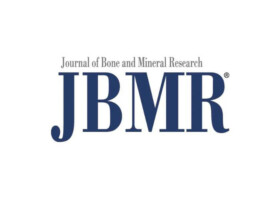
Authors:
A Sabokbar, P J Millett, B Myer, N Rushton
Abstract:
Studies on osteoblast-like cells isolated from trabecular bone, embryonic calvaria and osteosarcoma have helped to establish a set of properties associated with the osteoblast phenotype. These include alkaline phosphatase activity, synthesis of type I collagen, secretion of osteocalcin and production of a mineralized matrix. Moreover, it has been shown that these osteoblastic characteristics are modulated by dihydroxy vitamin D3, parathyroid hormone, glucocorticoids, prostanoids and various cytokine growth factors.
Of all the above, the most widely recognized biochemical marker of the osteoblast phenotype is alkaline phosphatase (ALP). ALP is a ubiquitous enzyme which catalyses the hydrolysis of phosphate esters at an alkaline pH. In humans there are three isoenzymes: tissue non-specific, intestinal and placental. The tissue non- specific isoenzyme has three isoforms, namely bone, liver and kidney, which contain different carbohydrate moieties on the same polypeptide backbone. Of these iso- forms, bone ALP shares a common protein structure with liver ALP, however, the two can be differentiated by electrophoretic mobility, chemical inactivation, lectin reactivity and thermostability. These differences have been used to distinguish bone ALP from liver ALP in serum and plasma of patients with pathological bone disorders such as osteoporosis or Paget’s disease, while others have used monoclonal antibodies that react preferentially with the bone isoform.
There has been extensive work and publication on ALP over the years, yet the precise function of skeletal ALP in vivo is largely unknown. Evidence suggests that the enzyme is involved in skeletal mineralisation. For instance, ALP has been shown to be associated with the plasma membrane of osteoblasts, which bud out to form the matrix vesicles seen in developing bone. In vitro studies have shown that ALP activity in foetal rat calvaria is proportional to the rate of collagen production. Most conclusive evidence comes from patients suffering from hypophosphatasia, who have a defect in ALP and are characterized by abnormal skeletal mineralization, and from studies in which the introduction of skeletal ALP cDNA into ALP-negative cells conferred an in vitro capacity for mineralization. As yet the precise role of ALP remains largely unknown.
For the complete study: A rapid, quantitative assay for measuring alkaline phosphatase activity in osteoblastic cells in vitro
